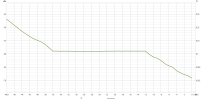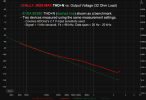nick_l44.1
Member
- Joined
- Jan 11, 2024
- Messages
- 82
- Likes
- 60
I believe that only technologies that are useful are interesting. There is no benefit from DRE, fake dynamic range will not improve sound quality. I agree that clicks are almost impossible to hear, and it is unrealistic to encounter conditions for clipping at 6-8 Hz, but the main question is: for what?Are you suggesting audio industry should not develop technologies that are not amenable for conventional measurement methods and standards? I for one have no problem with that. For example, if each and every DAC starts adopting DRE of some kind at some point in the future, measurement methodology must also evolve to take that into account.
The measurement methodology assumes that thermal noise is constant. What could be the interest for the end listener in the fact that the DAC literally hides this noise from the measurements? At low signal levels this is handled by DRE, at high levels by noise-shaping. The spectrum of music unlike 1 kHz sine is very dense and the noise will not be suppressed, and the dynamic range instead of 130 dBA will be up to 24 dB less (16 times!). However, I must admit that noise-shaping is a very useful technology in other cases.
Obviously to hide the use of gain manipulation. And you are right that a high steep step will have too much distortion in the transition.I can see how the CS engineers did not use simple thresholding for DRE switching
Well, the DRE level in these chips is exactly 24dB.
Oh, thank you! I tried such settings, but the older beta didn't work that way. It worked. Here is the DRE operation in CS43131 when the signal decreases from 0 dBFS. In my case, the dependence is exactly the same as when the signal increases.You don't have to worry about the sign of the Step value. REW will take care of that.
Dependence of noise level on signal level, BW96kHz. Measured with Cosmos ADC

So, I have no idea what exactly happens in the jm20 max when the signal goes down. But I doubt very much that it is some algorithm of the DAC chip.

